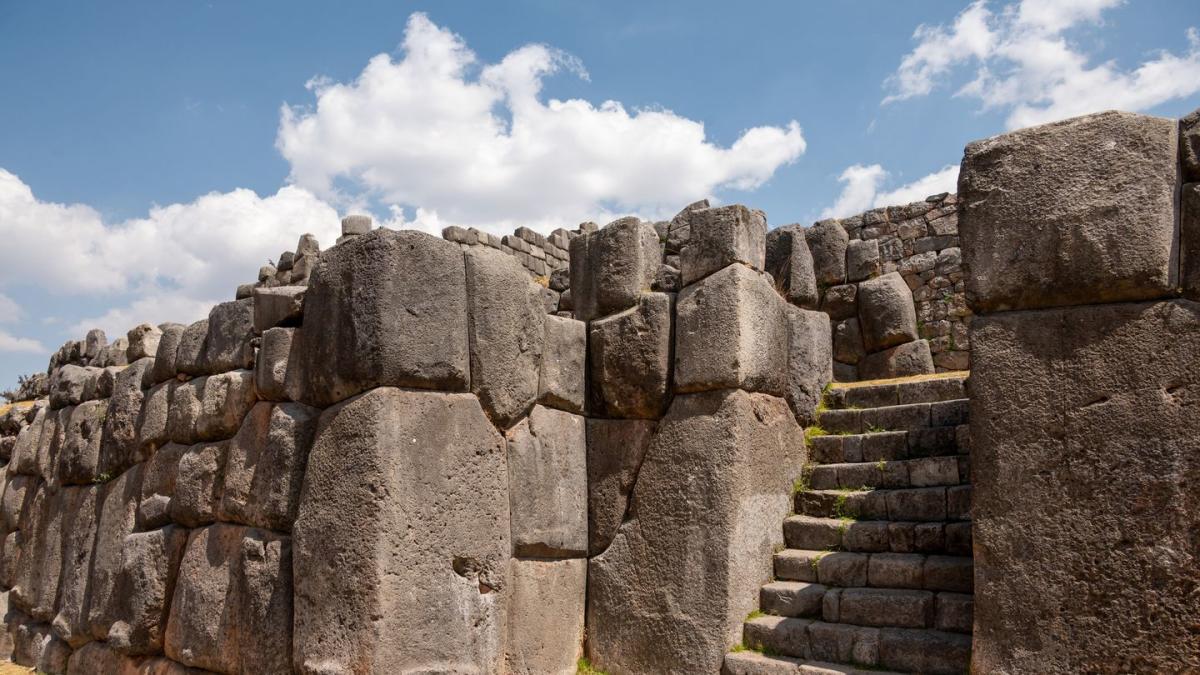
-
Archaeologists discovered a 4,000- to 5,000-year-old ceremonial temple within a sand dune in Peru.
-
Tucked between the ruin’s walls, the excavation team located burial remains of three humans.
-
Experts believe the site served as a religious complex.
Archaeologists recently found the lost ruins of a ceremonial temple—covered in sand and 4,000 to 5,000 years old—in northwestern Peru. The excavation team first discovered the walls, and subsequently unearthed a mix of features indicating that the structure was once a temple. And then came the skeletal remains of three adults tucked between walls.
“We may be facing a 5,000-year-old religious site that constitutes an architectural space defined by walls built by rammed earth,” Luis Armando Muro Ynoñán, director of the Cultural Landscapes Archaeological Project of Ucupe — Valle de Zaña, said in a translated statement from the Peruvian Ministry of Culture.
The oldest portion of the site features not only the up-to-5,000-year-old walls, but also various architectural features that help define the site as a ceremonial temple. “We have what would have been a central staircase from which one would ascend to a kind of stage in the central part,” Muro Ynoñán said, noting that the stage could have hosted ritual performances in front of an audience.
The ruins include friezes with images of cats, the claws of a reptile, and a human body with the head of a bird. The designs are preserved in “fine plaster,” which has helped scientists nail down the exact age of the site and the origins of the religion. The team plans to study the chemical makeup of the pigments in the murals painted on the walls to help confirm how old the site is this fall.
But it wasn’t just architecture located in these sand dunes—there were human remains, too. According to Reuters, the excavation team located the remains of three adult bodies positioned between the walls of the temple. Nearby was also a bundle wrapped in linen that potentially served as an offering.
“It was amazing,” said Muro Ynoñán, according to a statement from the Field Museum in Chicago. “This discovery tells us about the early origins of religion in Peru. We still know very little about how and under which circumstances complex belief systems emerged in the Andes, and now we have evidence about some of the earliest religious spaces that people were creating in this part of the world.”
Muro Ynoñán said that the newfound temple likely contains more information about a people group that predated the known inhabitants of the region. “We don’t know what these people called themselves,” he said, “or how other people referred to them. All we know about them comes from what they created: their houses, temples, and funerary goods.”
The excavation team was invited to the site after the local government observed looting in the area. “It was so surprising that these very ancient structures were so close to the modern surface,” Muro Ynoñán said. “We think that a large temple was built into the side of the mountain, and we’ve found one section of it.”
Archaeologists also found a more recent temple, dated to sometime between 600 and 700 A.D. Muro Ynoñán believes the second site comes from the Moche culture. This one also features remains—those of a young child, possibly between 5 and 6 years old—but from a more recent time.
“The people here created complex religious systems and perceptions about their cosmos,” Muro Ynoñán said. “Religion was an important aspect of the emergence of political authority.”
You Might Also Like
EMEA Tribune is not involved in this news article, it is taken from our partners and or from the News Agencies. Copyright and Credit go to the News Agencies, email news@emeatribune.com Follow our WhatsApp verified Channel





